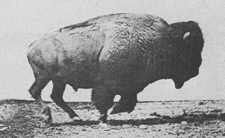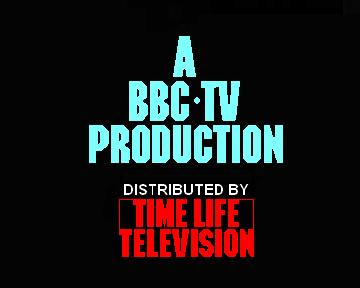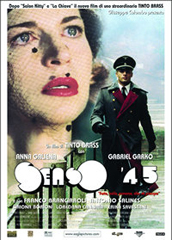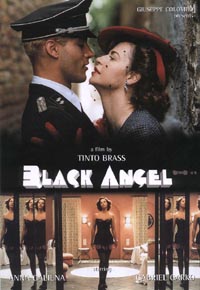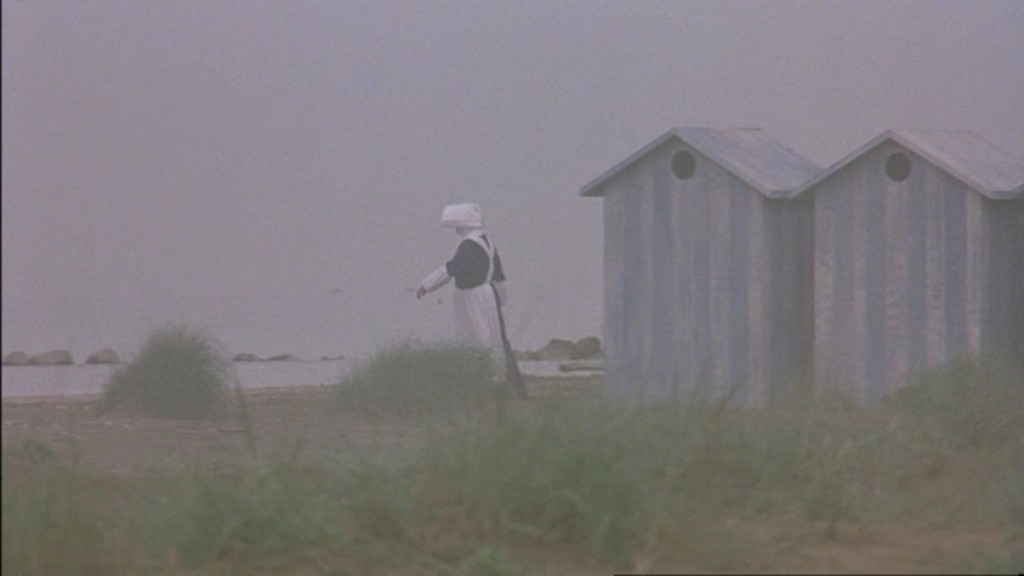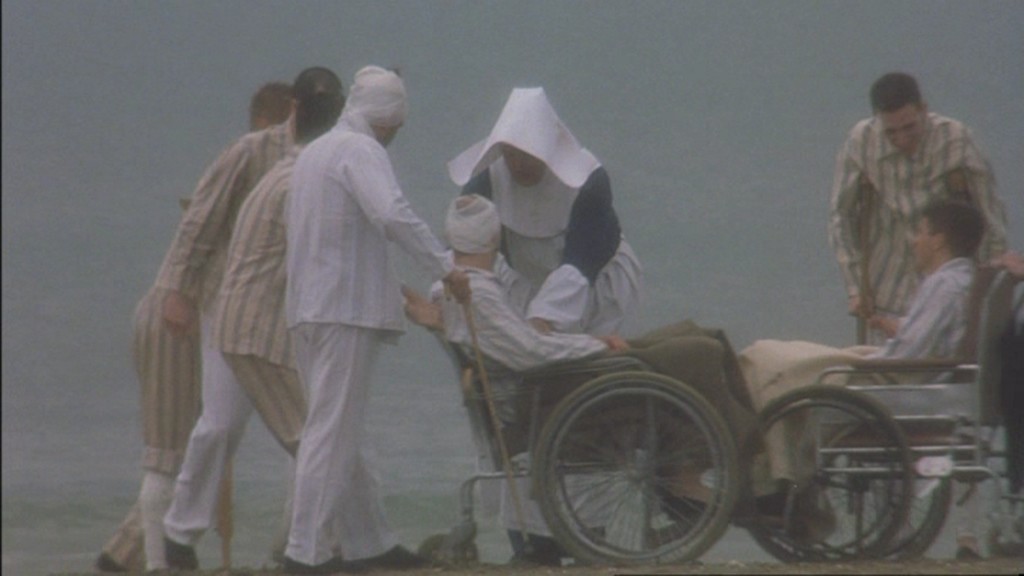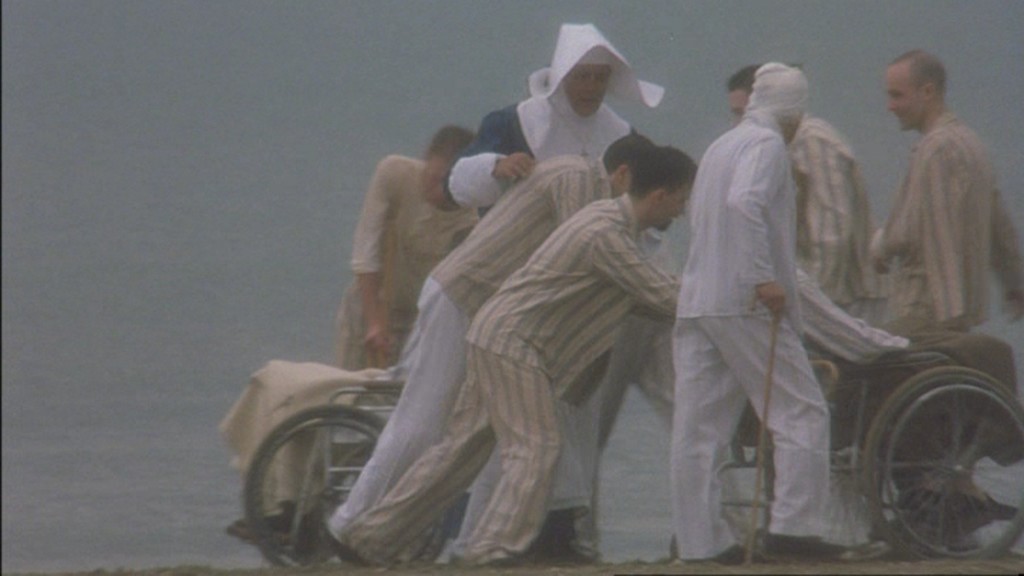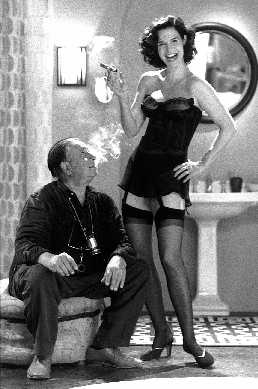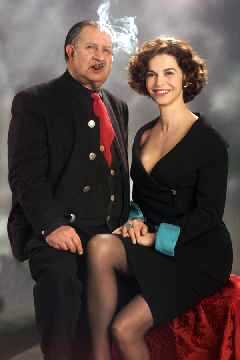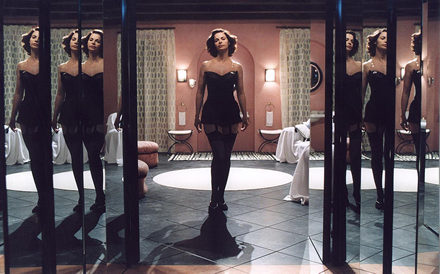THE WORKS OF TINTO BRASS

a.k.a.

(2002)
This is freely adapted from Camillo
Boito’s famous novella, Senso, which
Luchino Visconti had loosely adapted into a completely
humorless film in 1954. Brass updated the story to
World War II. Scheduled for release in April 2002.
Can I hitch a ride to Italy, anyone?
The working title, Angelo
nero, was retained for the international
English-title release.
NOTE ADDED ON THURSDAY, 7 NOVEMBER 2002:
I finally saw the movie on DVD. Brass has returned to what
critics might call “serious” filmmaking after a hiatus
of about eighteen years. Beautifully, intricately scripted
story of every sort of betrayal, with amazingly complex
characters and truly thought-provoking explorations of moral
ambiguity. Unlike any other Brass movie I’ve seen,
Senso ’45 looks stagy and artificial, much like
Masterpiece Theatre of the 1970s.
A few parts are laughably bad.
The scene midway through
the movie in which a little kid is traumatized by witnessing
the Nazis murder his mother is so artificial that, instead
of breaking your heart, it will leave you cold. But that
was the point, for some reason. In no other movie has Brass
drawn such strong parallels between sexual and emotional
exploitation on the one hand and the exploitation of
killing on the other.
CURIOSITIES: Senso
’45 contains numerous direct references to
almost all of Brass’s previous films — and at least
two Roberto Rossellini films too. Innumerable ideas,
characters, lines of dialogue, situations, camera angles,
props, and music are taken directly from Chi lavora
è perduto all the way through TRAsgreDIRE.
It’s almost as though Brass thought of his
previous movies as merely rough drafts for this one.
Some Italians were worried, if we can believe the
completely untrustworthy media, that Brass was going
to disgrace Luchino Visconti’s previous version
of this story. There’s nothing to worry about at
all. Both movies are superb, though very different.
TECHNICAL NOTES: Senso
’45 seems to be doing the opposite of what
video makers try to do. Many video makers try so hard
to mimic the “film look.” Senso ’45
mimics the video look. At first I
thought the movie was shot on video, but then I noticed
the occasional dust specks on the negative, and finally,
settling the case, was a mistimed shutter causing a
travel ghost. (Brass likes to use this effect to
demostrate a character’s confusion — and to terrify
projectionists while he’s at it.) So it was
definitely shot in 35mm, but it’s the cleanest transfer
I’ve ever seen in my life. Infuriatingly, even though
this is in most ways the best film-to-tape transfer I’ve
ever seen, it has two DREADFUL mistakes in it. In the
behind-the-scenes documentary at the end, we can clearly
see that the film was shot in old-fashioned Academy 1.375:1
format. And we can see from the way the screen
is masked that it was supposed to be cropped in the cinema
at the then-standard Italian format of 1.66:1. As with
TRAsgreDIRE, the end credits explicitly state
“Mascherino 1:1,66.” And yet the DVD is
electronically masked at the smaller 1.85:1 format, and
so foreheads are clipped off throughout the entire film. Ouch!
The layer change, as usual, comes in the midst of action and
dialogue. Why?
SUBTITLES ! The movie was
just released on DVD to English-speaking audiences, and it has
SUBTITLES!!!!!!!!!!!! Hooray!!!!! I was so expecting
another annoying English dub. What a relief! Now why can’t
someone release all of Brass’s non-English movies
with English subtitles? That would be a cause for
celebration. (But please don’t get the DVD from Hong
Kong. It’s bootlegged and censored. Grrrrrrrrrrrrrrrrrrrr.)
COMEDY AND FILM GRAMMAR: I don’t
understand why it works, but it almost always works. Establish
the basic credibility of your story, and then you can do the
goofiest, silliest things, and you won’t lose your
credibility. So, half-way through this intensely dramatic movie,
we see Tinto Brass playing the part of a nun. Once I saw that, I
realized that my initial estimation was correct: Brass simply cannot
take himself seriously. He takes his craft seriously. He takes
cinema seriously. But he cannot take himself seriously.
And that makes him sooooooooooo much better
than other filmmakers today. We can think back to the many
cameos he has made in his own films, to the wild comedy of
La mia signora
and Il disco volante,
to the nearly insane non sequiturs of Heart in His Mouth, to his shameless
self-caricaturing on television and in Lucignolo, to his absolute indifference to
his reputation with his preposterous erotic comedies from the
1990s. I find it impossible to dislike anyone like that; and
that, I guess, is one of the main reasons why I find his movies
irresistable. Hope at least a few of you agree. (Just moments
after writing the above, a friend dragged me over to the
television set to watch a bit of a reality show. I had
never seen one before. Ouch! How mean-spirited! Unendurably so!
Tinto Brass, thank heaven, is not mean-spirited. Quite the
contrary. I find him the warmest filmmaker of all. I like
warmth in my entertainment.)
NOW I’M GOING TO GRIPE AGAIN
Look at the foreheads at the top of the images. |
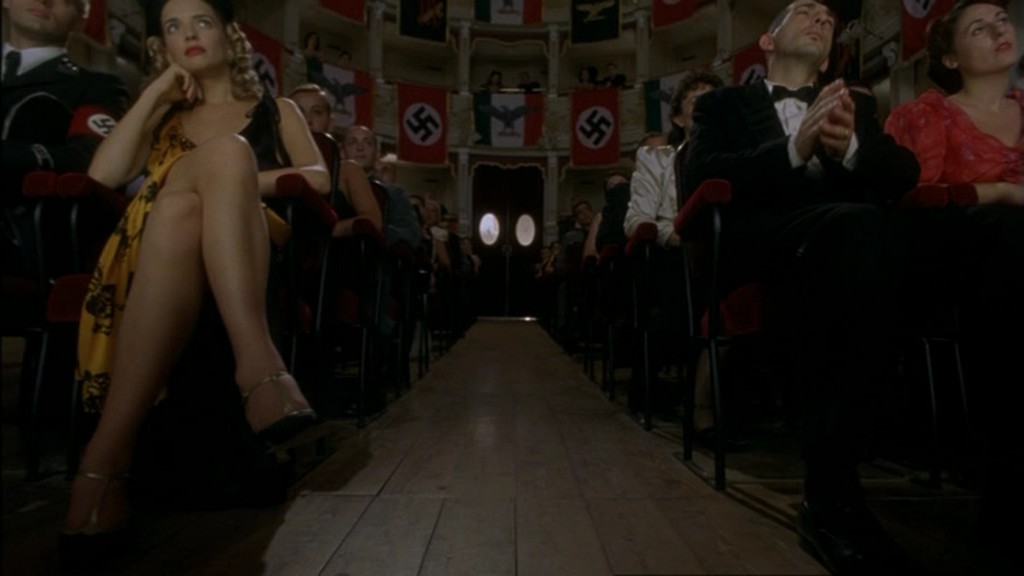 |
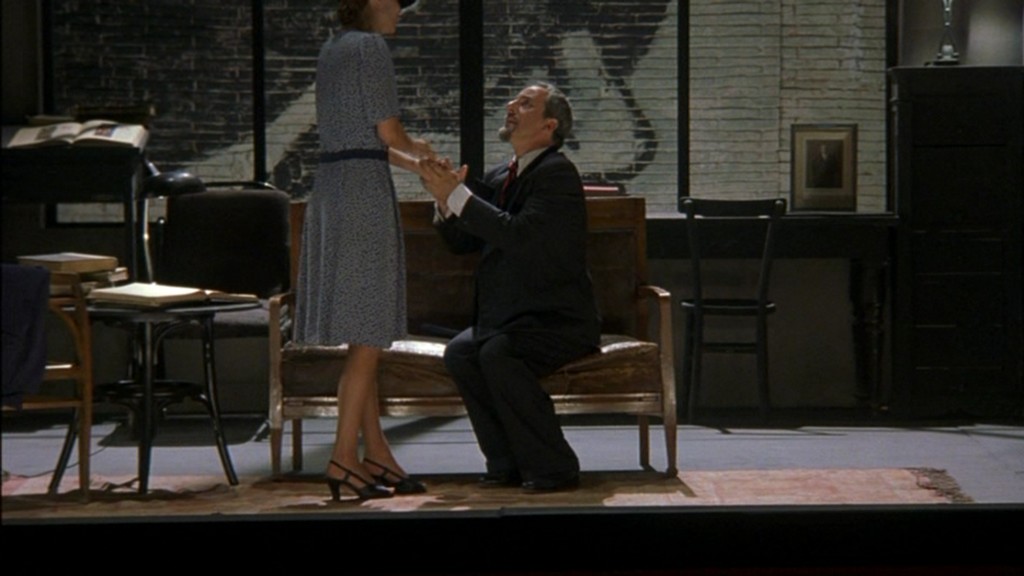 |
 |
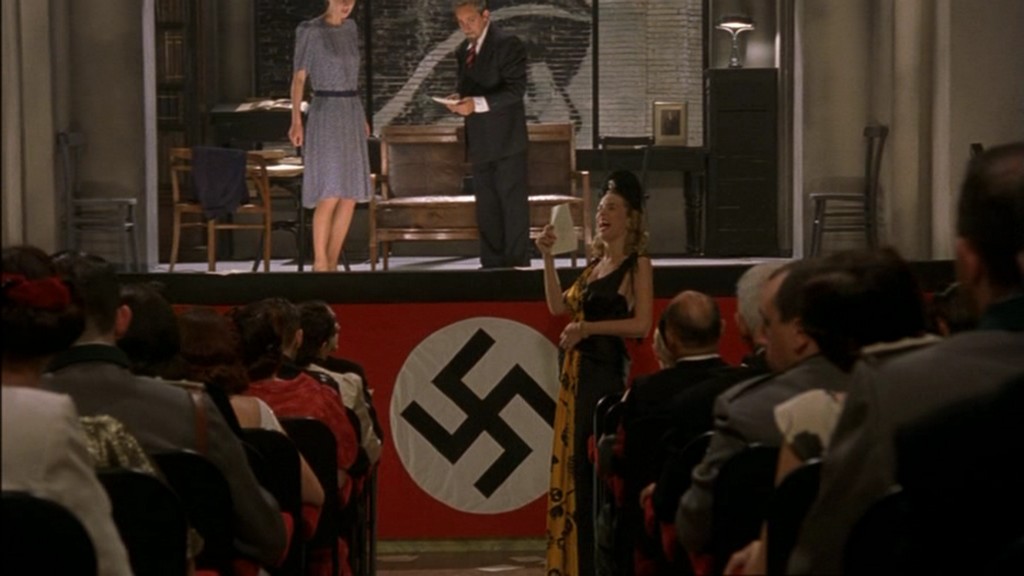 |
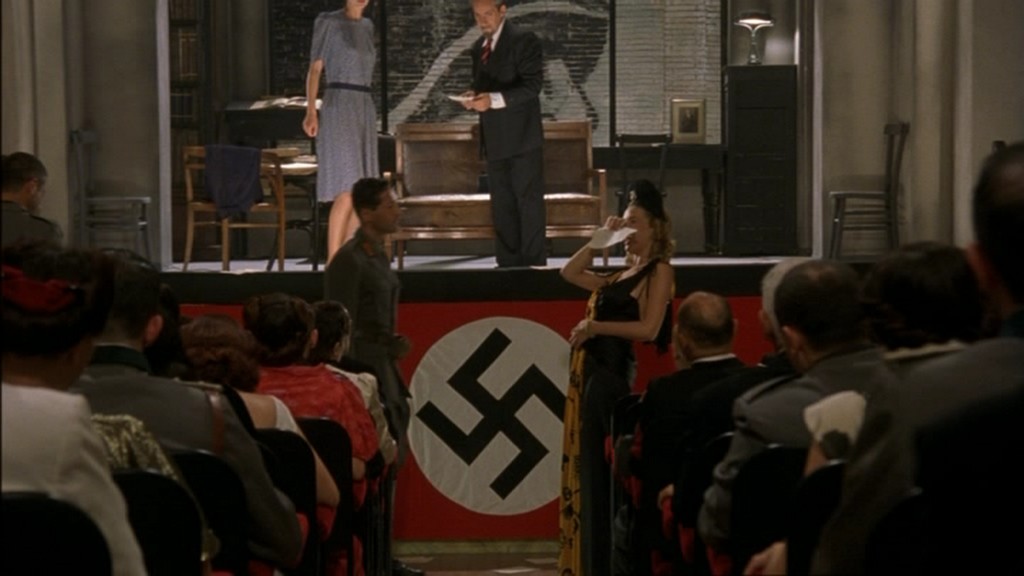 |
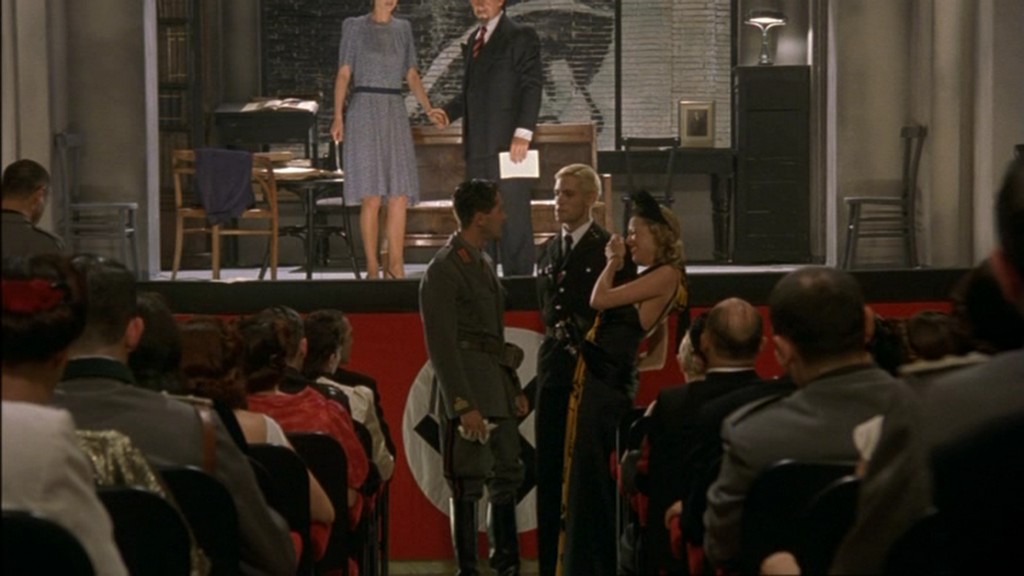 |
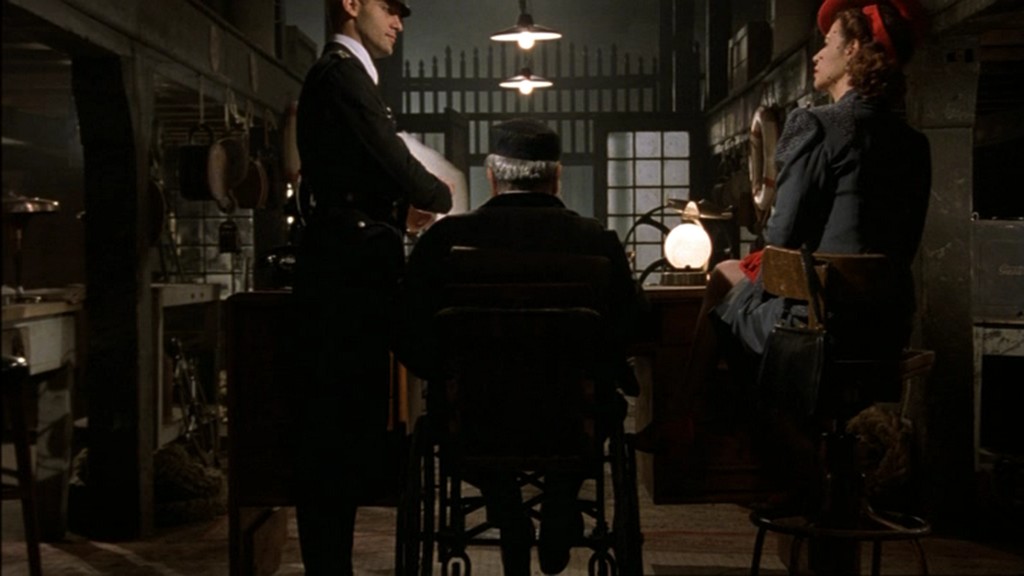 |
| Below is a clapper board with the title of the movie-within-the-movie: Tradimento.
Not too visible, is it? |
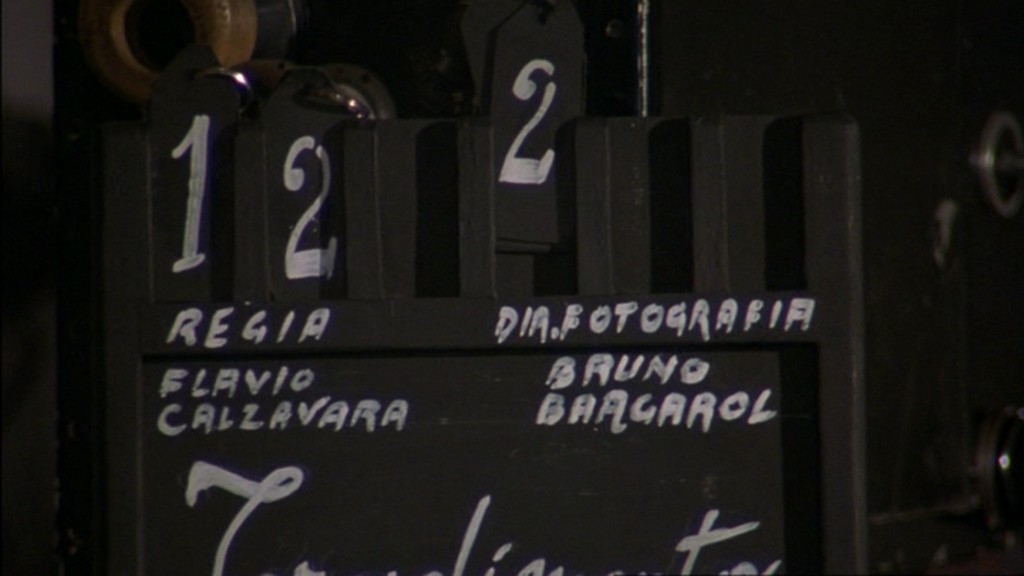 |
So, what was the problem?
As usual, the folks at the film-to-video transfer studio think that one widescreen crop is as good as any other.
Wrong!
Here we get a tiny, incomplete glimpse of something we’re normally not allowed to see.
In the studio screening room, the rushes were projected onto a screen.
To check the composition, black cloth was draped across the top and bottom.
This was a test.
All the image needed to be usable,
but all the essential action had to be kept across the center.
If any essential action appeared on the black cloth on top or bottom, the scene would have to be retaken.
For some reason that I don’t understand,
a black-and-white video camera was pointed at the movie screen, and the result was shown on a black-and-white TV monitor.
While Senso ’45 was being filmed, there was a second movie being made as well.
This second movie was a documentary, a behind-the-scenes documentary, to be precise.
The cameraman for the documentary crew tried to get a shot of the black-and-white TV monitor,
but couldn’t quite squeeze himself in. So he got a shot of part of the black-and-white TV monitor.
Still, though, even this fragmentary image tells us something.
It shows us the black cloth at the top and bottom of the screen,
and so we now know, definitively, the exact crop that Tinto Brass and his camera crew were composing for.
Compare the screening room’s set-up on the left with the corresponding frame of the DVD on the right.
A bit of height is missing, yes?
Maybe you think it’s not much?
True, it isn’t much, but it’s enough to crop off foreheads throughout the movie,
and it’s enough to obscure the Tradimento inscription on the clapper board.
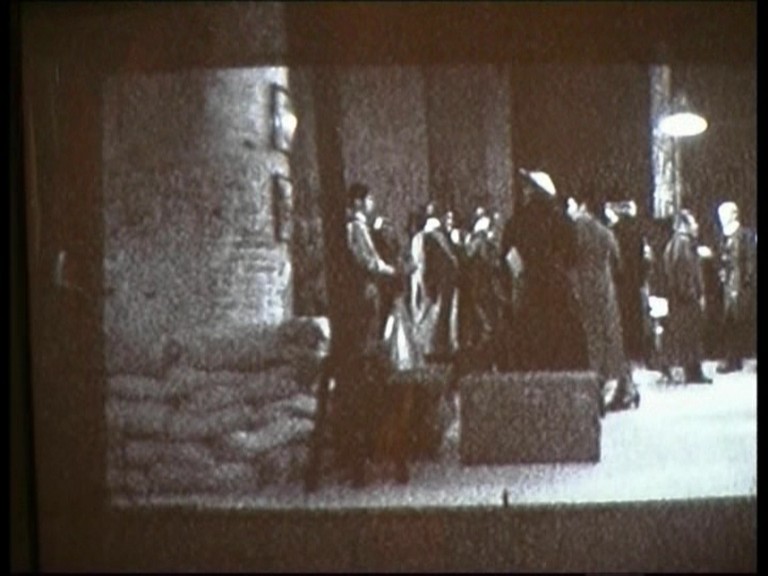 |
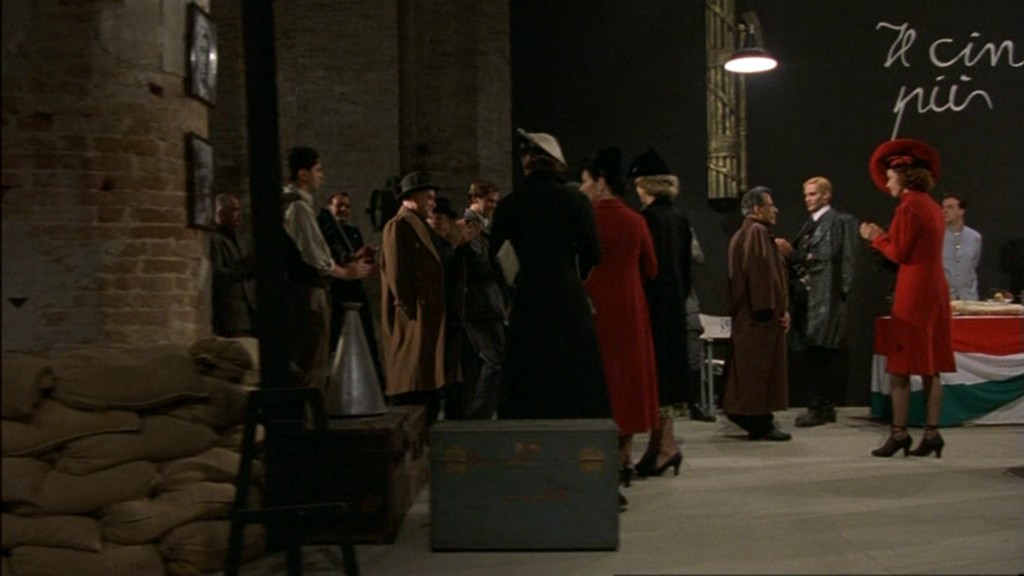 |
| Let’s have one more bit of fun.
Again, the comparison is poor, because we’re comparing a frame from the preview with a frame in the movie,
and the video transfers were made separately, and differently.
The video transfer of the preview was missing some width.
The video transfer of the movie was missing some height.
Isn’t life fun? |
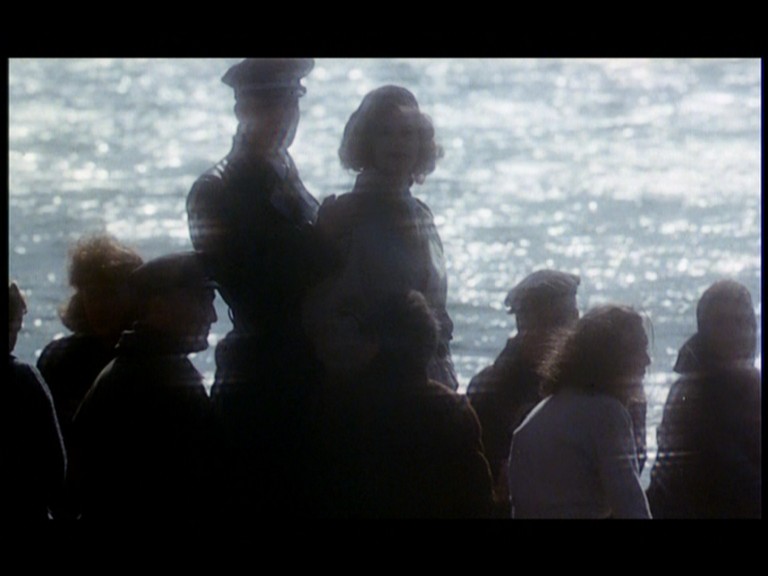 |
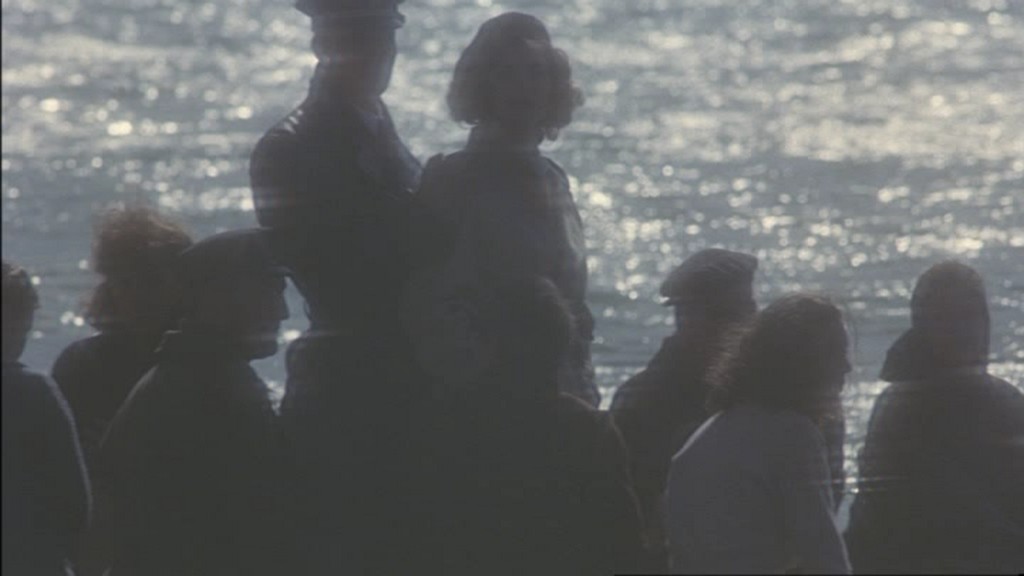 |
| And the correct crop? It’s specified in the end credits: |
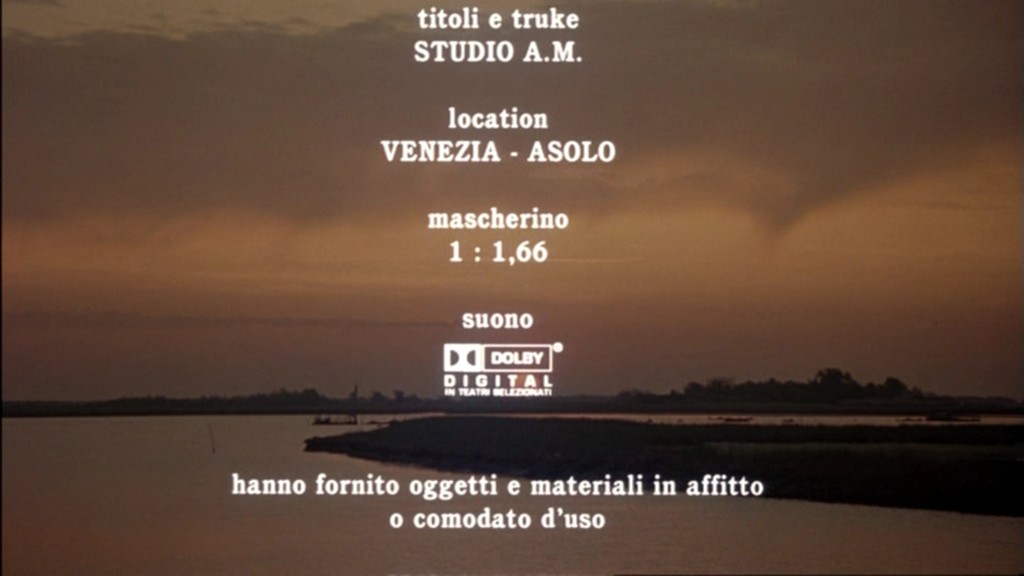 |
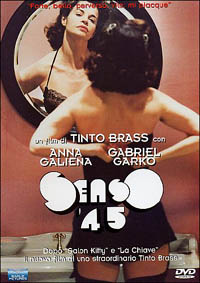 |
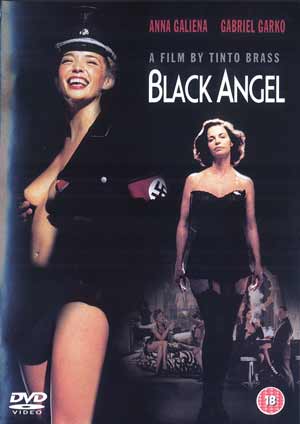 |
| The Italian Region-2 PAL DVD, which will not play on most US equipment. Nice behind-the-scenes featurette in the supplements. |
The British Region-2 PAL DVD, which will not play on most US equipment. Essentially the same supplements. Non-removable English subtitles throughout. |
Giuseppe Colombo presenta
un film di Tinto Brass
Senso ’45
| Soggetto (original story) |
Tinto Brass |
Liberamente ispirato al racconto
(freely inspired from the tale) |
Senso di Camillo Boito |
| Sceneggiatura (screenplay) |
Tinto Brass |
| Musiche originali (original music) |
Ennio Morricone |
Direttore della fotografia
(director of photography) |
Daniele Nannuzzi |
Supervisione alla produzione
(production manager) |
Mario di Biase |
Montaggio e regia
(editing and direction) |
Tinto Brass |
| Distribuzione (distribution) |
Eagle Pictures |
| Scenografie (art direction) |
Carlo De Marino |
| Costumi (costumes) |
Alberto Moretti, Alessandro Lai |
| Arredamento (set décor) |
Ettore Guerrieri |
| Fotografo di scena (still photographer) |
Gianfranco Salis |
| Produzione (production) |
Giuseppe Colombo per Cine 2000 |
| Vendite estere |
Adriana Chiesa Enterprises |
| Pellicola (raw stock) |
Kodak |
| Teatri & Laboratori |
Cinecittà |
| Riprese (locations) |
Venezia - Asolo - Roma |
| Inizio riprese (principal photography begins) |
2 Maggio 2001 (per 13 settimane) |
| Durata (running time) |
|
|
